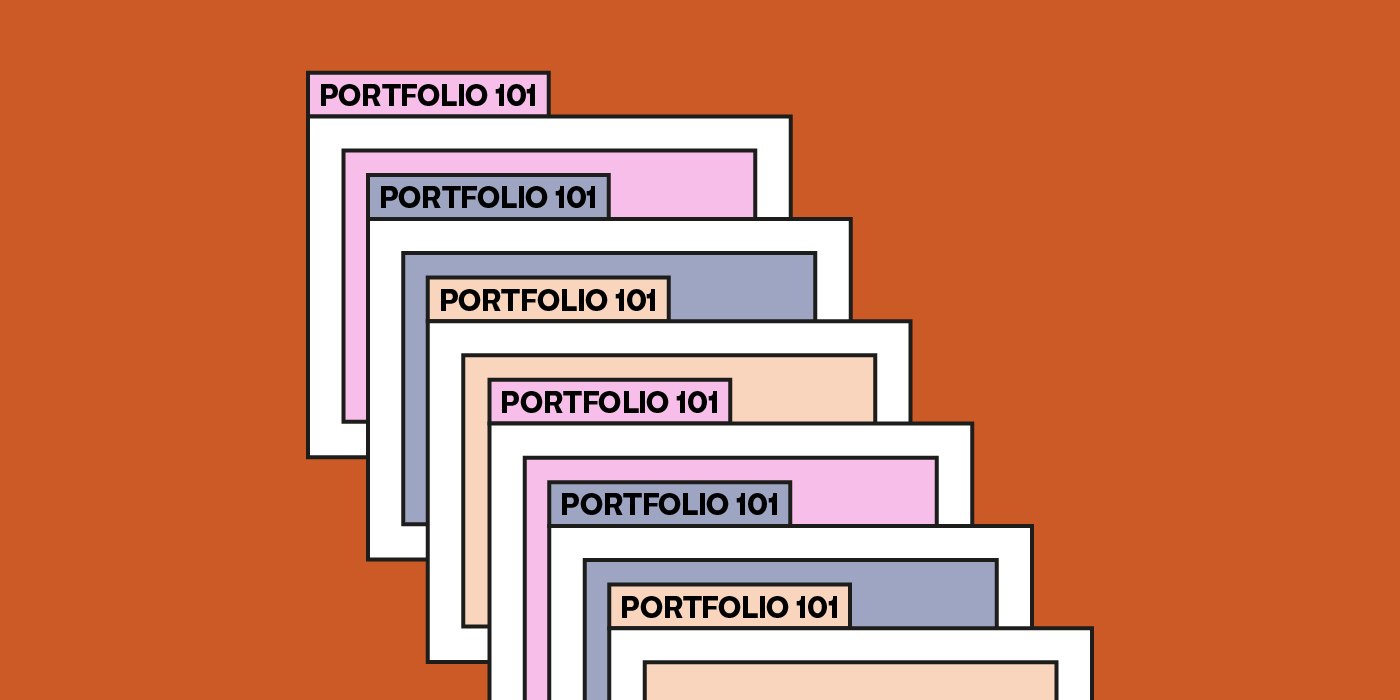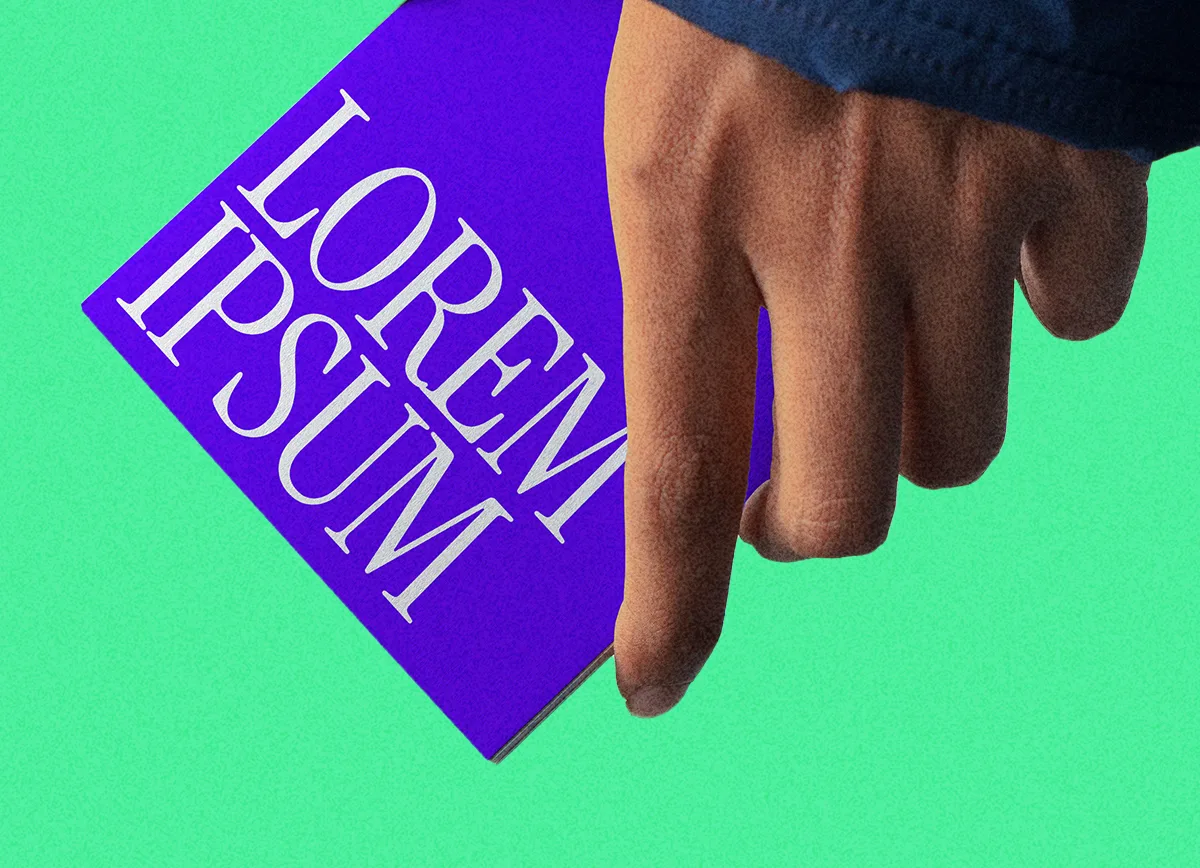Dear Amigos,
Crafting or updating your portfolio can pose many challenges and feel intimidating – we understand. The complexity of this project sparks various questions and insecurities. How should I present myself to the world? What do companies (or my audience) expect from me? Is there a specific method or secret approach? We’ve been there, so rest assured, we’ve got your back.
Heads-up: There isn’t a single way to approach designing a portfolio project. However, following certain considerations will keep you on the right track, help you stand out, showcase your expertise, and display your talent effectively.
So, when confronted with “the blank page”, keep these advices in mind:
1. Your portfolio IS a design project, so treat it like one
Give your portfolio the same attention to detail and dedication as any other client project. Define a clear objective, set goals, identify your target audience, and understand the best message to convey. Curate your projects with a clear scope. A well-curated portfolio demands planning, thoughtful execution, and keen attention to detail.
Tip: Research, define benchmarks, study designers you admire, and analyze how they present their work. Also, delve into the office, studio, or agency you are applying to for more insight into their preferences.
2. Not all clients, agencies, and studios need the same
Your audience, the clients, agencies, and studios you are applying to, differ widely in their niches, services, and expectations. One portfolio structure doesn’t fit all job opportunities unless you’re targeting a specific type of agency or similar projects/clients.
Example: If you’re interested in the Technology realm, showcasing a portfolio solely with printed editorial projects might not suffice for the job, they might be interested in seeing projects related to UIUX, communication campaigns related to tech clients or purposes, content that shows you are a connoisseur of the niche.
Should you build a custom portfolio for every client? No, not necessarily. Have a structure and a general idea defining who you are, and choose the projects you show based on the client or agency you are interviewing with. Don’t try to adapt to every opportunity; some projects or job vacancies may not align with your profile, and that’s perfectly okay. There are various types of designers, and embracing what sets you apart is a healthy career approach.
3. Ask yourself: What is my ideal client?
Everyone envisions their future designer self, the perfect project or job, and its characteristics. If you don’t know it yet, that’s fine – keep experimenting. To bring that dream to life, pursue projects aligning with that goal. If real clients aren’t available, self-initiated projects are an excellent way to attract those dream clients or projects.
4. Tailoring for Your Ideal Client
Customize your portfolio to attract your dream clients. Showcase work that aligns with the projects you aspire to undertake. By featuring content relevant to your dream client, you establish a connection, demonstrating your comprehension of their needs and your capability to solve their potential problems.
Displaying projects that align with your target niche attracts more of the type of work you are looking for. Curate not only your portfolio but also your career decisions.
5. Big Image First Approach
Present beautifully crafted, large-size images of your projects. Avoid cluttered pages with excessive information or many small images – they diminish the significance of your work. Be bold with your images.
Select a small number of images per project. If everything is important, then nothing is. This is especially relevant when presenting a PDF format portfolio.
Tip: For a portfolio website, include around 6-10 images per project. For a PDF portfolio, point to 3-6 images per project.
6. Quality Over Quantity
Resist the temptation to add every single project you’ve done. Effective portfolio curation embraces the philosophy of quality over quantity. Focus on presenting the pinnacle of your work – projects that represent your highest caliber and diverse skill set. This also aligns with the job opportunity you are applying for. Remember, less is more!
Tip: Showcase a maximum of 8-10 projects.
7. Embrace the Power of Copy Writing
Combine visuals with engaging written content. Tell the story of each project, explaining how you came up with ideas, faced difficulties, and achieved outcomes. Written content adds depth to your portfolio, showing potential clients how you solve problems and work on projects.
Tip: Be concise with your writing. People reviewing portfolios have limited time, and they may not read everything in detail. Mention the conceptual reasoning, show the process, and research briefly. Hyperlinks can provide more information about each project, references, inspiration, typography, etc.
8. Acknowledging Contributions
Mention the collaborators, clients, or teams involved in each project. Give credit where it’s deserved. This boosts your credibility and showcases your collaborative and teamwork skills. Being transparent about the context in which your creative work took place fosters a positive resonance with clients.
9. Ask for Feedback
Asking for will help you identify blind spots, improve quality and relevance of the content you are showcasing. It will help you create an engaging presentation that could potentially be tailored for specific audiences. It also boosts confidence and provides networking opportunities. By incorporating feedback, you can refine your portfolio to make a stronger impression and align it with industry standards.
10. Update and Upgrade
Regularly updating your portfolio is crucial to stay relevant in the design industry. This involves incorporating your latest projects, aligning with industry changes, and using current keywords to reflect your skills. As design requirements evolve—such as the shift from print to digital—your portfolio should adapt to showcase your adaptability and expertise in the latest trends and technologies.
11. Final Considerations
- Add your CV to your portfolio.
- Use a layout that makes projects stand out.
- If possible, have a portfolio website, but always have a PDF version ready to send.
- Be cautious with the file’s weight when sending a PDF; heavy files are challenging to download and can be annoying for recruiters.
We hope you found this guide for creating your portfolio useful. If you have any doubts, feel free to reach out at info@atypeofamigo.com. If you’d like a portfolio or project review, email us! We’re happy to help.
Yours truly,
Camila Curiel
Editor in Chief – A Type of Amigo


